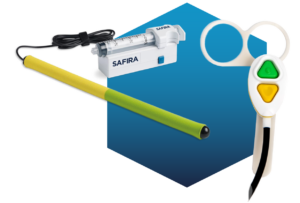Current Regional Anaesthesia process:
Regional anaesthesia procedures typically require two operators – an anaesthetist who holds an ultrasound scanner and peripheral nerve block needle, using the ultrasound to guide the needle tip placement. A second operator is then required to inject the anaesthetic solution.
It has been reported that anaesthetic solutions are often injected at high pressure.
High pressure can cause damage to nerve fascicles, with serious nerve damage occurring in up to 1% of procedures and transient nerve damage in up to 8% of cases [1,2].
[1] Borgeat A, Blumenthal S. Nerve injury and regional anaesthesia. Curr Opin Anaesthesiol. 2004 Oct;17(5):417-21. doi: 10.1097/00001503-200410000-00011. PMID: 17023899.
[2] C. L. Jeng, T. M. Torrillo, M. A. Rosenblatt, Complications of peripheral nerve blocks, BJA: British Journal of Anaesthesia, Volume 105, Issue suppl_1, December 2010, Pages i97–i107, https://doi.org/10.1093/bja/aeq273



